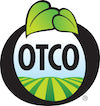This Chocolate Bar Costs $260
Investing in high quality food products is something we can get behind here at The Organic Whey. We know the value of quality ingredients and why it’s important to support small businesses that value things like sustainability and paying fair wages. But a $260 chocolate bar? Even that got us to do a double-take.
But that’s the price of the To’ak 50-gram chocolate bar and founder Jerry Toth thinks people will pay, for good reason.
According to Modern Farmer, Toth suggests To’ak customers split the expensive chocolate bar into 12 four-gram servings, bringing the cost down to just under $22.
If divvying up a bar of chocolate seems a little strange, Toth says it’s the future. Within five years, “dark chocolate tasting will be something that people in the US do,” he told Modern Farmer. And in ten years, Toth says the high-end chocolate category will “be a saturated market.”
With an interesting take on chocolate, Toth produced 574 of the bars from Ecuadorian old growth cacao trees. Trees he says won’t be around much longer.
Farmers in Piedra de Plata, Ecuador entrusted Toth, a former Wall Street investment banker, with a valley of Fino y de Aroma trees, “the near-extinct ‘holy grail’ of cacao beans that was almost wiped out by a 1916 outbreak of the ‘witches’ broom’ fungus,” Modern Farmer explains. And what’s even more inspiring than the trees themselves might just be the To’ak farmers’, “with genealogies that can be traced alongside the stories of the old-growth cacao plants.” Toth told Modern Farmer: “The people that planted these trees are the grandfathers, and great-grandfathers, of the old men who are harvesting these trees today.”
And like fine wine, chocolate varieties do impart unique flavor and texture. You won’t taste this in a Hershey’s bar or a KitKat, but in higher-end chocolate products like To’ak—and in the raw cacao beans themselves—the different notes and flavors are distinct.
Still, $260 for a chocolate bar?
Toth says it’s worth it, crediting the traditional processing system that includes the multigenerational hand harvesting, curing and packaging. But it’s the beans, so delicate, so temporary, that are the real reason for the price. “The truth of the matter is, the crop that we’re getting now will maybe last for the next five years, 10 years, or if we’re lucky, a little longer,” Toth said. “It’s kind of like when you look at immigrants from Europe that came over in the 1890s. It’s a pure German family, and then one of the German kids marries an Irish kid from Chicago, and over time, there’s this slow evolution of genetics … the [current old-growth trees] have those old-school genetics.”
Whether or not To’ak’s fine chocolate is in your budget, it does provide an opportunity to look at food in a new light. What is each bite really worth? How much difference do our food choices make?
Leave a comment
Comments will be approved before showing up.


